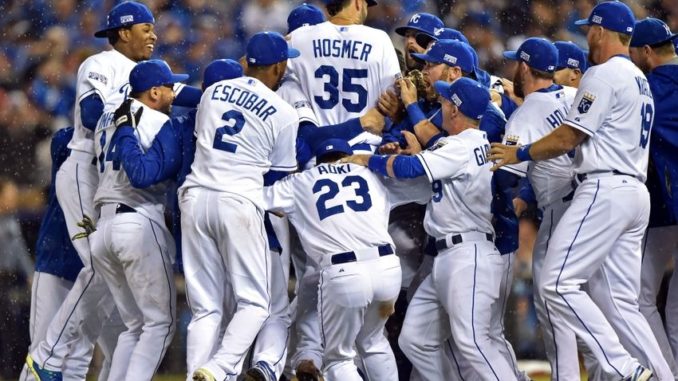
As the major leagues begin it’s final one-third of the 2017 regular season schedule and the Braves take a hard look at the conclusion of their third year of the John Hart/John Coppolella rebuild that started after the 2014 season, I feel like it may be worthwhile to explore the teams that have recently gone down the road of rebuilding. I will be comparing them to the Braves efforts to date, to see how the efforts of those other teams, for good or ill, could help inform Braves fans on what can occur in the years to come.
My first look is at one of the rebuilds that gestated the longest and may have one of the shorter shelf-lives, but nonetheless can’t be deemed anything other than a complete success: the Kansas City Royals.
Other case studies in this series:
Washington Nationals
Pittsburgh Pirates
Length of Rebuild: Seven years (2006-2012)
Primary Talent Acquisition Method: Draft
Success Level: Two playoff appearances to date, one division title, two World Series appearances, one championship
Rebuild Timeline
2006: Identify Strengths and Weaknesses
After 4 consecutive losing seasons and well on the way to a 5th, on June 8, 2006 Royals owner David Glass hired Dayton Moore to be his general manager. Moore had spent the previous 12 years working in the Braves front office, first as a scout and making steady advancement up to Assistant General Manager. Moore had a front-row seat view of how Braves general manager John Schuerholz and assistant Dean Taylor built and maintained a team core through the draft, and convinced Glass that he could apply similar principles to the Royals.
The Royals had three significant problems as Moore took over the helm of the franchise:
1. Lack of talent at the major league level
At the major league level, the most talented overall player was a young pitcher who missed most of 2006 getting mental health treatment for social anxiety disorder and who was seriously considering walking away from the game: right-hander Zack Greinke. The team leaders in bWAR in 2006 were defensively-challenged third baseman Mark Teahen and 36-year-old former Expos infielder Mark Grudzielanek. The pitching staff was the worst assembled in the majors that year, pitching to a MLB-worst 5.65 ERA, thirty points worse than the second-highest team.
This is where the Braves had a leg up when they started their re-build; rather than wait until things to hit rock bottom, the Braves saw that the 2014 core would not be able to be maintained and parlayed them into pieces that could accelerate the rebuild.
2. Lack of talent at the minor league level
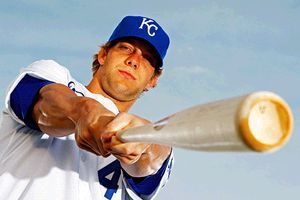
The Royals farm system was, if anything, in worse shape. Baseball America rated the Royals minor league talent level as 26th in the majors, and history shows that the rating may have been generous. The only significant major leaguers to emerge from the Royals system as it stood when Moore took over would be third baseman Alex Gordon, designated hitter Billy Butler, and infielder Mike Aviles. The Royals had virtually no Latin American amateur talent pipeline to speak of, though they did sign 16-year-old future All-Star catcher Salvador Perez
The Braves farm system was in similar shape at the end of the 2014 season, ranking 26th by Baseball America. While all 10 from the BA Top 10 for the Braves have now made it to the majors with the recent promotion of 2014 #1 prospect Lucas Sims to Atlanta, none of the other ranked players have had a significant impact in the majors so far. What the Braves did have however was a quietly good international scouting program that had already signed 16-year-olds Ozzie Albies and Ronald Acuna.
3. One of the smallest player payrolls in baseball
Moore also would not be able to turn to ownership to help buy his way back to respectability either. David Glass made is name and fortune as the president and CEO of Wal-Mart and he brought strict payroll controls to that retail chain which drastically cut overhead and spiked shareholder value. Glass brought that same philosophy to the Royals, and in 2006 the Royals payroll was only a little over $51 million total, 27th out of 30 teams.
While not beloved by Braves fans in general, owners Liberty Media do not look at the Braves as a significant revenue source and do not expect to extract profit from team operations. Essentially the Braves are allowed to spend what they earn. This is a third advantage that the Braves had over the Royals as they began their respective rebuilds, as the Braves payroll has been maintained in roughly the middle of the pack in the majors.
2007-2008: The New Core is Drafted
The 2006 season ended with a 62-100 record, and in the offseason Moore made a few moves to address some of the immediate pitching issues. Moore signed 28-year-old free agent starting pitcher Gil Meche from the Seattle Mariners to head the rotation for a club record 5-year, $55 million deal. Moore’s thinking was that Meche was young and just entering his prime, so he could headline the rotation during the rebuild but still be viable when the team presumably would be better toward the end of the contract, He also signed journeyman relievers Octavio Dotel and David Riske and selected 23-year-old reliever Joakim Soria from the San Diego system in the Rule V draft, a selection that went on to be one of the biggest Rule V success stories. Moore also traded rookie league pitcher Erik Cordier for Atlanta Braves shortstop Tony Pena, the first of many transactions Moore would consummate with his former employers.
Top prospect Alex Gordon won the starting third base job in spring training and number two prospect Billy Butler joined the team in May as the team started the youth movement. Zack Greinke returned to the team and provided a boost, first in the bullpen then moving into the rotation. At the trade deadline, Moore would send Dotel to the Braves for young pitcher Kyle Davies.
The team demonstrated moderate improvement, bettering their 2006 record by 7 games. The record improved again in 2008 with essentially the same team, bettering by another 8 games to 75-87.
However, the biggest transactions that would have the biggest impact for the future would be in the draft. Dayton Moore and his staff would have back-to-back drafts that refilled the farm system and would lay the groundwork for the eventual successful rebuild. The 2007 draft brought in 3B Mike Moustakas (1st round), LHP Danny Duffy (3rd), RHP Greg Holland (10th), and OF David Lough (11th). The 2008 draft added 1B Eric Hosmer (1st) and LHP Mike Montgomery (1st/supplemental). The international scouting department also started bearing fruit, signing 13 of the top Latin American amateur prospects, the most successful of whom would be RHP Kelvin Herrera.
The first two drafts of the new regime turned out to be the most critical for the success of the Kansas City rebuild. Moore also used some of his limited payroll to address glaring immediate needs in his major league team, but the Meche signing was also intended to be a long-term bet where he would bridge the team until young pitching would arrive. To date the Braves have not made a similar splash in free agency, though the Nick Markakis signing is somewhat similar and addressed an immediate need in the wake of the Jason Heyward trade.
Like the Royals, the Braves rebuild will likely be a success or failure based on the first two drafts in 2015 and 2016, which has brought in the likes of Kolby Allard, Mike Soroka, Austin Riley, A.J. Minter, Patrick Weigel, Ian Anderson, Joey Wentz, Bryse Wilson, and Brett Cumberland. Only two years in, it remains to be seen how well the those drafts will impact the major league team, but early signs are good as almost all of the top picks of the 2015 draft are already at least at the AA level.
2009-2010: The Royals Shuffle the Deck
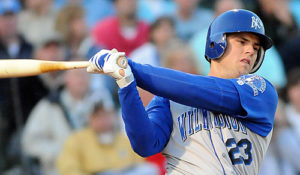
In many ways, the 2009 season was a step backwards for the Royals. The team won 75 games in 2008, their highest win total in 5 years and were lead by starting pitchers Gil Meche and Zack Greinke, who combined to pitch 412.2 innings. Greinke took his game up a level in 2009, pitching to a 2.16 ERA/2.33 FIP in 229.1 innings and running away with the AL Cy Young Award. Meche on the other hand battled injuries and ineffectiveness. Kyle Davies and Brian Bannister, young pitchers traded for early in the rebuild process, also failed to develop or provide quality performances. The team fell to a 65-97 record, and frustrations started to make themselves apparent. The team dismissed manager Trey Hillman and brought in former Brewers manager Ned Yost, who was a longtime coach under Bobby Cox for the Braves and for whom Moore was familiar.
The 2009 draft would not turn out as talent-laded for the Royals as the prior two drafts, but they did draft outfielder Wil Myers in the 3rd round.
The 2010 season would be largely the same, only Greinke regressed to a 4.17 ERA. Alex Gordon, long considered the answer at third base for the team, was convinced to switch to left field as he proved not to be up to the task defensively. Gordon’s conversion to the outfield was painful, and his offense suffered in the move, but it would be a key decision later. But in the meantime the Royals stumbled again to a 67-95 season. Even though the Royals would place 9 prospects in Baseball America’s Top 100 after the season, four years into the rebuild the fans were getting restless, and so was Greinke. Two years away from free agency, Greinke requested a trade to a contending team.
It was a crossroads moment for the organization. Other trades of major league talent had not born significant fruit, and Greinke would be the biggest trade chip the team had ever tried to move. On December 19, 2010, the Royals traded Greinke and utility infielder Yuniesky Betancourt to the Milwaukee Brewers for shortstop Alcides Escobar, outfielder Lorenzo Cain, reliever Jeremy Jeffress, and pitching prospect Jake Odorizzi.
The Greinke trade would end up being the biggest shot in the arm for the rebuild, but it would be a couple more years for that to become apparent. While many fans were livid about the team trading away their best player two years before he reached free agency, Moore and the front office made a clear-headed decision when Greinke forced their hands. Ownership maintained faith in the front office and the front office maintained faith in the young players they scouted, acquired, and were developing.
2011-2012: Youth Is Served
With Zack Greinke off to the greener pastures of Milwaukee County Stadium and Gil Meche retiring and walking away from $12 million guaranteed from the Royals after unsuccessful rehabs for a variety of ailments, Dayton Moore and the team flipped the switch on the franchise, and 2011 saw the wholesale promotion of many of the prospects that made the Royals the top farm system in baseball. While there were still short-term players in the line-up, such as former Braves Jeff Francoeur, Melky Cabrera, and Wilson Betemit, and the rotation was likewise patched with the likes of Jeff Francis and Bruce Chen, over the course of the season the starting line-up and the bullpen in particular would see drastic changes.
Shortstop Alcides Escobar, left fielder Alex Gordon (who would become an All-Star caliber player starting in 2011 and win the first of four consecutive Gold Gloves), and designated hitter Billy Butler would remain mainstays, but every other position saw a change before the end of the season:
| Position | Opening Day Starter | Age | Transition Date | End of Season Starter | Age |
|---|---|---|---|---|---|
| Catcher | Matt Treanor | 35 | 8/10/2011 | Salvador Perez | 21 |
| First Base | Kila Ka'aihue | 27 | 5/6/2011 | Eric Hosmer | 21 |
| Second Base | Chris Getz | 27 | 8/5/2011 | Johnny Giavotella | 23 |
| Third Base | Mike Aviles | 30 | 6/10/2011 | Mike Moustakas | 22 |
| Centerfield | Melky Cabrera | 26 | 9/23/2011 | Jarrod Dyson | 26 |
| Right Field | Jeff Francoeur | 27 | 9/24/2011 | Lorenzo Cain | 25 |
Not all of these transitions would go off smoothly. The best out of the gate was first baseman Eric Hosmer, who hit .293/.334/.465 with 19 HR to start his career. Everyone else however didn’t necessarily hit better than the veterans they were replacing. This was especially true in the outfield, where Cabrera and Francoeur had career resurrecting offensive seasons.
In the rotation, 22-year-old left-hander Danny Duffy made his debut in May and would start 20 games on the season and take his lumps, pitching to a 5.64 ERA. It was a rapid rise for Duffy from high school to the majors, and the results bore that out. Duffy would only appear in 11 games total in 2012 and 2013 due to a torn UCL before he would resume his place for the Royals major league club.
It was instead the bullpen that saw the biggest influx of new talent. Twenty-one-year-old lefty Tim Collins, acquired from the Braves for Rick Ankiel and Kyle Farnsworth, would appear in 68 games. Righties Greg Holland, Aaron Crow, and Kelvin Herrera would also test the waters, with Holland in particular having success. Strong bullpens would become a hallmark of the Royals championship teams which helped mask relatively suspect starting rotations.
This is the phase of the rebuild the Braves seem to have entered. Prospects Dansby Swanson, Ozzie Albies, Sean Newcomb, Max Fried, Lucas Sims, Johan Camargo, and Akeel Morris have been given opportunities in the last calendar year, with an even greater influx likely to come over the course of the rest of this season and next.
The bullpen would again be a high point in 2012 and they would have a collective 3.17 ERA to lead the majors. The rotation was pedestrian again, but already it was becoming understood that opposing offenses would need to make hay early in the game or run the risk of being mowed down by the bullpen.
At the same time, the offense was suffering growing pains. The two infield linchpins, Eric Hosmer and Mike Moustakas, would stumble to an 81 and 91 OPS+ season respectively. Shortstop Alcides Escobar was turning into a defensive star, but lack of plate discipline had many doubting that he would be a positive value player offensively. Outfielder Lorenzo Cain suffered an injury that would keep him out of the majors for almost three months, and second baseman Johnny Giavotella played himself back to the bench. Only Alex Gordon, catcher Salvador Perez, and DH Billy Butler would provide positive offensive value on the way to another losing season, going 72-90.
Despite the severe growing pains suffered by most of the young position players, Moore and Glass didn’t panic. The prospects were brought up fast and were developing while in the majors. That process isn’t often pretty or fun to watch, and fans were restless and tired of hearing about “the process”.
2013: The End of the Rebuild
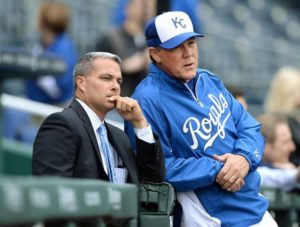
Despite overall mediocre performances in 2012 by the new young core, the front office knew it was time for the team to sink or swim. The rebuild would come to and end before the 2013 season.
To help with the swimming, Moore moved to address the biggest weakness of the team, the starting rotation. He traded prospect Brandon Sisk to the Los Angeles Angels for veteran starting pitcher Ervin Santana and his $13 million contract, making him easily the highest paid one-year Royal in team history. He was allowed this luxury due to almost his entire team core making at or near the major league minimum.
If there was any doubt that the Royals were ending the rebuild and attempting to move into the contender category, it was erased when they shipped four of their top 10 prospects (outfielder Wil Myers, righty Jake Odorizzi, lefty Mike Montgomery, and third baseman Patrick Leonard) to the Tampa Bay Rays for starting pitchers James Shields and Wade Davis.
Most fans and national baseball pundits were aghast at the trade from the Royals side. They didn’t seem to be anywhere near contention based on 2012 results. But the facts were that the Royals were dealing from strength to address areas of weakness. In any case, the die was cast, and the rebuild was over.
The Royals would finish in third place in 2013 with a 86-76 record. Shields and Santana would end up with strong seasons, solidifying the rotation while the bullpen continued to be the best in the majors. The offense still stumbled, but played solid defense. Hosmer rebounded nicely and joined Perez, Gordon, and Butler to form at least half of a positive offensive line-up. While the Royals would not make the playoffs in 2013, they would finish with their first winning season in 10 years.
The 2014 season would see yet more incremental improvement as Danny Duffy returned to the rotation to join veterans Shields, Jeremy Guthrie, Jason Vargas, and rookie Yordano Ventura. Wade Davis made a startlingly effective transition to the bullpen, pitching to a 1.00 ERA in 72 innings, one of the best seasons of relief pitching of all time. This team would get hot at the right time, going 41-27 in the second half and getting into the playoffs as a Wild Card. The Royals would ride the hot streak all the way to the World Series and push the San Francisco Giants to a Game 7.
The 2015 season was a true quantum leap however, as the team went 95-67 to bully their way to a division pennant. The teams had the same core of players – Perez, Hosmer, Escobar, Moustakas, Gordon, Cain, Dyson, Ventura, Duffy, Holland, Herrera – plus more judicial use of short-term veterans. Moore even did a big deadline trade, sending top prospects Brandon Finnegan, John Lamb, and Cody Reed to the Cincinnati Reds for Johnny Cueto, who would pitch well down the stretch and in the playoffs on the way to a World Series title, the first for Kansas City since 1985.
This is the biggest question that Braves fans have: when does the rebuild end? The front office itself sends confusing signals, seemingly willing to trade prospects to bring in veteran help, the stipulation being that they must be cost-controlled so that they can help in the present as well as in the future when the new young core is installed and performing well. It is in this writers opinion that the Braves can learn from the Royals example; have faith in the scouting and development the team has done, get the core in the majors and THEN trade for cost-controlled veterans, like the Royals did with James Shields and Wade Davis.
2017: The Royals Today
As of this writing, the Royals are 57-54, in second place in the AL Central and within striking distance of 1st place. The same core of those championship teams is more-or-less intact. Eric Hosmer, Mike Moustakas, Salvador Perez and Lorenzo Cain are all having quality seasons. In the rotation, Danny Duffy has been solid despite some injuries, though the team was shaken by the tragic offseason death of young pitcher Yordano Ventura. Other teams seem to have adopted the Royals successful approach of building a hyper-competitive bullpen so that’s not quite the competitive advantage for the Royals as it once was.
The Royals made some minor deadline trades to try to shore up some weaknesses, but this may end up being the last shot at postseason glory for this core of Royals. Hosmer, Moustakas, Cain, and Escobar will all be free agents at the conclusion of the season, barring contract extension before then. A series of poor drafts and the use of prospects in trades for veterans has reduced the Royals farm system back towards the bottom of the league. Outfield Alex Gordon, a key contributor to the playoff runs of just a couple of years ago, was signed to the largest contract in Royals history and his production has taken a tremendous fall. Salvador Perez likewise was extended and is still at an All-Star caliber, but with so much of the payroll taken up by Gordon, it’s unlikely the Royals will be able to retain many if any of their core players. With few heirs apparent in the minors, it looks like the Royals may have more lean times ahead.
The Braves believe that their flush farm system will keep the good times rolling for a long run of success once the rebuild is complete. The Royals example shows that relying on constantly hitting on the draft is almost impossible. They also show that being judicious with payroll is key to maintaining winning seasons. Alex Gordon is a longtime fan and front office favorite, but as a player passing his prime years, he was a poor extension candidate. That payroll would have been better off going to younger pending free agents.
Lessons For the Braves and Braves Fans
- It’s better to start a rebuild before the team hits rock bottom. Be honest in self-evaluation. The longer you wait to start a rebuild, the longer the rebuild will take. The Royals rebuild took 7 years.
- The two drafts after you start the rebuild are the most critical. If the rebuild is to be successful – and short – you have to hit with a high number of picks.
- Develop international scouting and relationships to help fill in the organizational gaps with talent.
- The Moneyball Lesson: find the undervalued assets. For the Moneyball A’s, it was players with good on-base skills. For the Royals, it was building an overpowered bullpen. Building a pitching staff from the back was more cost-effective for the penny-pinching Royals, and it helped keep mediocre starting pitchers from having to go more than two times through a batting order. The Braves may have found their undervalued asset in pitchers with UCL tear histories, but the jury is still out.
- Push the prospects, and be patient with them when they struggle. Fans will react as fans do, but team management needs to let the process play out.
- End the rebuild when the core is in place, and once in place do not trade from it.

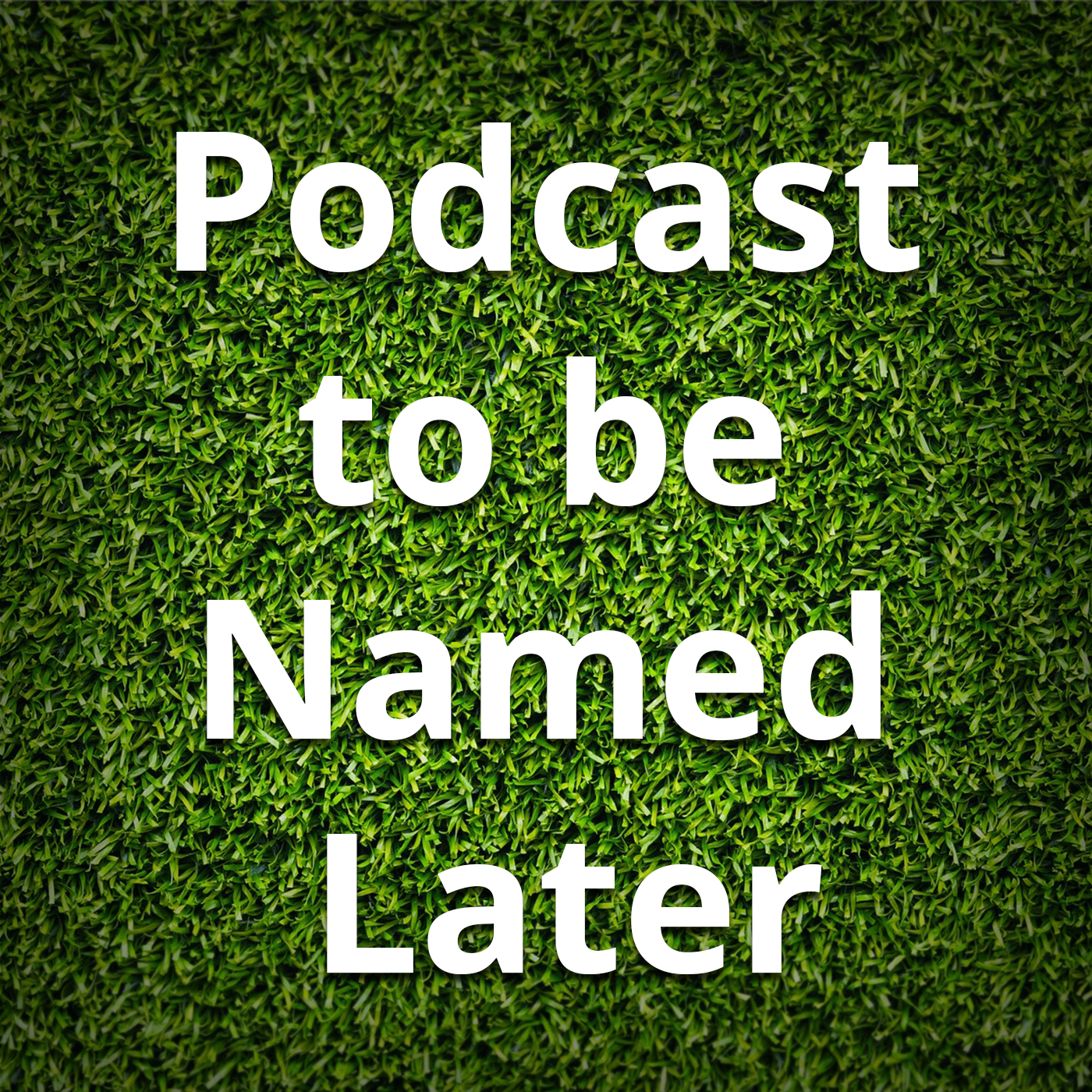
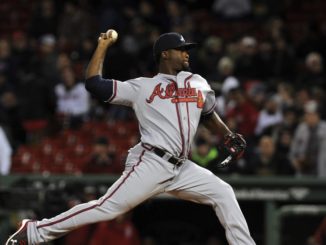
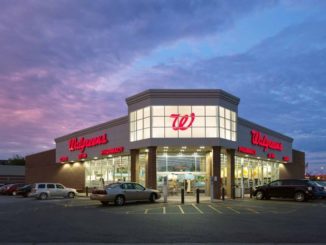
Outstanding analysis of a truly remarkable rebuild, with interesting parallels to the Braves’ situation.
Thanks! Look for more coming in the weeks ahead.